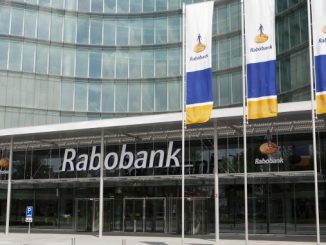
Landshypotek Bank issued the first green covered bond from Sweden on Wednesday, a SEK5.25bn (EUR510m) five year issue that is the largest Swedish krona green bond to date and which achieved pricing at a sizeable “greenium”, exceeding the issuer’s expectations.
Announced last month, the first green covered bond to be backed by forestry loans attracted final demand of over SEK7bn after the book had peaked at around SEK12bn before the final pricing was set.
“We feel this deal was a great success,” Andreas Birgersson, senior funding manager at Landshypotek Bank, told Sustainabonds. “We had big expectations for investor interest, but we could never have dreamed that after half an hour we would have an order book of around SEK12bn – that is a very strong order book in that short time.”
“We had great hopes, but in the end they were exceeded.”
The deal is the largest green bond denominated in Swedish kronor to date, surpassing SEK5bn issues by German agency KfW and Kommuninvest, the Swedish local government debt office.
“Our intention was always to print the SEK5.25bn size,” said Martin Kihlberg, chief sustainability officer and general counsel at Landshypotek Bank.
Birgersson said the deal was priced with “a very good greenium”, offering the issuer a 6bp saving, estimating that an equivalent non-green issue for Landshypotek would have been priced at around 33bp.
“We are very happy with the price,” he added.
Charlotte Asgermyr, chief covered bond and FI market strategist at SEB, agreed that the deal was priced with a sizeable saving versus the expected pricing of a corresponding deal on Landshypotek’s non-green curve.
“We assess that they saved around 5bp,” she said.
Asgermyr added that the green deal was priced 5bp above the five year point on the covered bond curve of compatriot Stadshypotek and estimated that a non-green Landshypotek deal would probably have been priced around 10bp wider than Stadshypotek’s curve.
She noted that there has been further evidence of “greeniums” in the Swedish krona market, with Kommuninvest’s two Swedish krona green bonds to date having been priced inside its conventional curve.
Birgersson added that through the deal Landshypotek reached some accounts from across the Nordics that had not invested in the bank’s issuance before, and that the order book was supported by a number of high quality, dedicated green accounts.
Leads Danske, Handelsbanken and Nordea launched the five year deal on Wednesday morning with guidance of 29bp-32bp over mid-swaps, indicating that the deal’s size was expected to be sufficient to ensure eligibility for Level 1B under Liquidity Coverage Ratio requirements.
After around 40 minutes, the leads revised guidance to 27bp-29bp with books around SEK12bn, excluding joint lead manager interest. Some accounts subsequently dropped out of the book, while others came in upon the new guidance. With books still above SEK10bn, guidance was revised again to 26bp-27bp, will price in range. Then, one hour and 30 minutes after launch, the size was set at SEK5.25bn (EUR510m) and spread at 27bp. The book closed at over SEK7.2bn, excluding JLM interest.
Acknowledging how some investors dropped out of the deal when guidance was revised to 27bp-29bp, Birgersson noted that demand nevertheless remained strong throughout the process, with the additional accounts coming in at the new guidance level.
SEB’s Asgermyr noted that the execution of Kommuninvest’s most recent green bond followed a similar pattern, with demand peaking quickly, then falling when the guidance was revised tighter.
“I wouldn’t say this was greater than normal price sensitivity,” she said.
Investors ‘see forestry potential’
The deal came after Landshypotek held investor meetings on Monday and Tuesday to present its green bond framework. Under Landshypotek’s framework, proceeds can be used to finance sustainable forestry, renewable energy and green buildings. The inaugural issue is backed by forestry loans – which were already in Landshypotek’s cover pool – and is the first green covered bond to be backed by such collateral.
“It is particularly gratifying to be the first to issue a green covered bond backed by Swedish forests,” said Kihlberg (pictured below). “It is unique and is fully aligned with the bank’s operations to make a real impact in promoting a sustainable society based on entrepreneurial activity across the country.
“It is positive that investors can see the financial and environmental potential in Swedish forests.”
 To be eligible for the bond, the forest properties must have certifications from the Programme for the Endorsement of Forest Certification (PEFC) or the Forest Stewardship Council (FSC) or they must have green forest management plans that include setting aside areas of particular conservation value. Properties must also have 5% deciduous trees to promote increased diversification, increased biodiversity and storm protection.
To be eligible for the bond, the forest properties must have certifications from the Programme for the Endorsement of Forest Certification (PEFC) or the Forest Stewardship Council (FSC) or they must have green forest management plans that include setting aside areas of particular conservation value. Properties must also have 5% deciduous trees to promote increased diversification, increased biodiversity and storm protection.
The bond is backed by forest holdings totalling 320,000 hectares, encompassing around 1.4% of Sweden’s productive forests and absorbing slightly more than two million tonnes of carbon dioxide every year, according to Landshypotek. The forests are privately owned.
Landshypotek’s green bond framework is aligned with ICMA’s Green Bond Principles and has received a second party opinion from Cicero, which gave the framework a “dark green” shading – the best ranking on its shading scale.
Only one other green covered bond has been issued out of the Nordic region to date, a EUR1bn issue for Norway’s SpareBank 1 Boligkreditt in January.
Although Landshypotek’s new issue is the first green covered bond issued out of Sweden, the country has taken a leading role in the wider green bond market, with EUR9.7bn equivalent of outstandings as of the end of 2017 making it the sixth largest green bond market in the world and by far the largest in the Nordics, according to figures from the Climate Bonds Initiative (CBI). Almost EUR6.5bn equivalent of the Swedish green bonds outstanding are denominated in Swedish kronor.
The CBI states that Nordic investors, in particular large pension funds such as Sweden’s AP7, have also played an important role in the development of the green bond market by integrating the sustainability agenda into their investment strategies.



